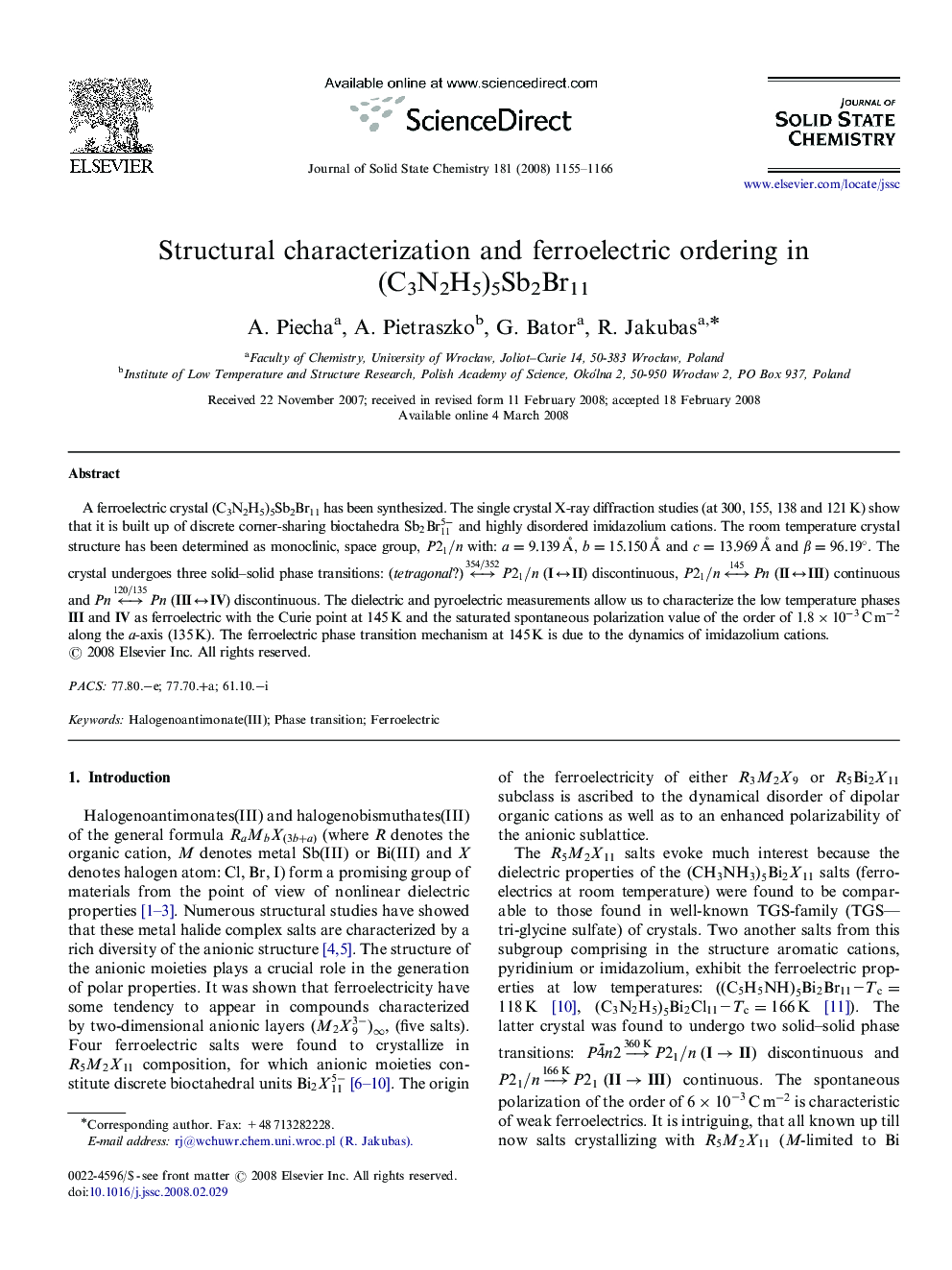| Article ID | Journal | Published Year | Pages | File Type |
|---|---|---|---|---|
| 1333036 | Journal of Solid State Chemistry | 2008 | 12 Pages |
A ferroelectric crystal (C3N2H5)5Sb2Br11 has been synthesized. The single crystal X-ray diffraction studies (at 300, 155, 138 and 121 K) show that it is built up of discrete corner-sharing bioctahedra Sb2Br115- and highly disordered imidazolium cations. The room temperature crystal structure has been determined as monoclinic, space group, P21/nP21/n with: a=9.139A˚, b=15.150A˚ and c=13.969A˚ and β=96.19∘β=96.19∘. The crystal undergoes three solid–solid phase transitions: (tetragonal?)⟷354/352P21/n(I↔II) discontinuous, P21/n⟷145Pn(II↔III) continuous and Pn⟷120/135Pn(III↔IV) discontinuous. The dielectric and pyroelectric measurements allow us to characterize the low temperature phases III and IV as ferroelectric with the Curie point at 145 K and the saturated spontaneous polarization value of the order of 1.8×10-3Cm-2 along the a-axis (135 K). The ferroelectric phase transition mechanism at 145 K is due to the dynamics of imidazolium cations.
Crystal packing down the a-axis in (C3N2H5)5Sb2Br11 in plane II at 155 K.Figure optionsDownload full-size imageDownload as PowerPoint slide
